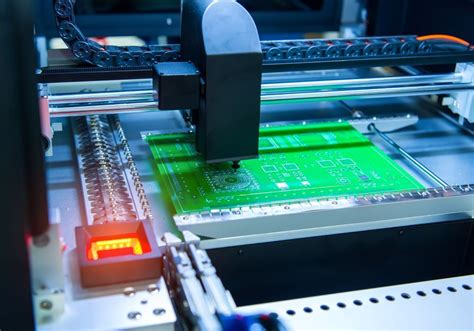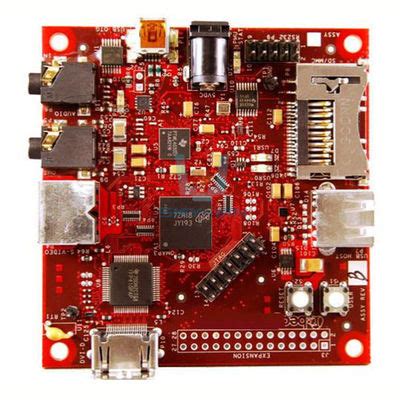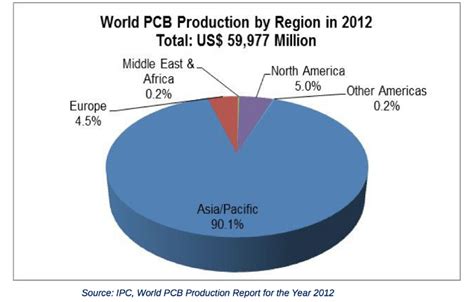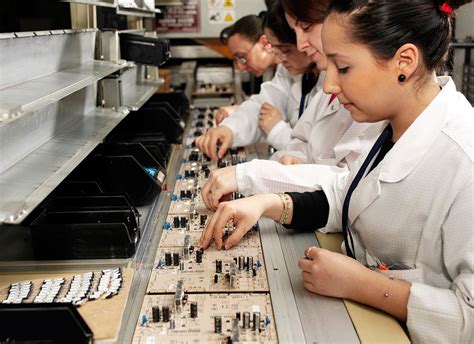Essential PCB Fabrication Equipment for Efficient Prototyping

Key Takeaways
When considering PCB fabrication equipment, it’s vital to understand that efficient prototyping hinges on the right tools and techniques. Whether you’re venturing into the pcb manufacturing business or simply streamlining your designs, familiarity with essential equipment can significantly impact your outcomes. For instance, using high-quality pcb manufacturing tools not only ensures precision in your designs but also reduces the overall pcb manufacturing cost through optimized processes. By integrating advanced technologies such as CNC milling or chemical etching into your workflow, you can achieve higher accuracy and better results in a shorter timeframe. Moreover, collaborating with reputable pcb manufacturing companies can provide you access to state-of-the-art equipment that enhances your production capabilities. Ultimately, by embracing the right combination of techniques and tools, you can elevate your prototyping process to achieve a balance between innovation and efficiency in the realm of PCB fabrication.

Introduction to PCB Fabrication Equipment
In today’s fast-paced technological landscape, understanding essential PCB fabrication equipment is vital for anyone involved in the realm of electronic design and manufacturing. When you’re looking to turn your concepts into viable products, the pcb manufacturing process begins with the right tools. Knowing what pcb manufacturing companies utilize can guide you in choosing equipment that meets industry standards and optimizes your project’s success.
At the core of PCB fabrication lies a range of tools tailored for every stage—ranging from design software to advanced printing machines. You’ll find that investing in quality equipment can significantly affect your pcb manufacturing cost by reducing waste and improving efficiency. To streamline your workflow, consider implementing CNC milling, a method renowned for its precision and ability to create complex designs without extensive manual labor.
"The right equipment not only enhances productivity but also ensures high-quality outcomes—key elements for any successful pcb manufacturing business."
Below is a table that highlights some essential equipment used in PCB fabrication along with their respective roles:
| Equipment Type | Function |
|---|---|
| PCB Design Software | For creating circuit layouts and schematics |
| Photo-Plotters | For transferring designs onto substrates |
| Etching Equipment | For removing unwanted copper |
| CNC Mills | For precise cutting and shaping |
| Soldering Stations | For component attachment |
Familiarizing yourself with these tools will pave the way for more efficient prototyping, as they foster a deeper understanding of how each component contributes to the overall process. By carefully selecting and integrating quality PCB fabrication equipment into your workflow, you are setting up a foundation for success in your future endeavors within pcb manufacturing.
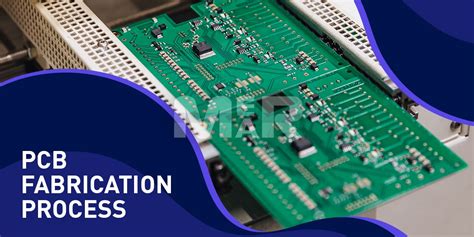
Essential Tools for PCB Design and Layout
In the realm of PCB manufacturing, selecting the right tools for your design and layout process is crucial for achieving optimal results. You will find that software solutions like Altium Designer and Eagle are essential for creating detailed schematics and layouts. These programs streamline your workflow, allowing you to focus on innovation rather than getting bogged down by technical limitations. Alongside design software, having access to simulation tools is vital; they help you test and validate your designs before moving on to production. This step is particularly significant when considering the costs associated with PCB manufacturing — ensuring that your layout is error-free can save you from expensive revisions later on.
You may want to consider using design rule checkers (DRCs) as part of your toolkit; these tools automatically check for potential layout issues, thereby reducing the chances of mistakes that could prolong your project timeline or increase PCB manufacturing costs. Additionally, obtaining a good follow-up service from reputable PCB manufacturing companies can mean that any discrepancies discovered during prototyping can be swiftly addressed. The decision-making process surrounding these tools has a direct impact on the efficiency of your pcb manufacturing business, ensuring that you can bring products to market more quickly while maintaining high-quality standards in both design and functionality. Ultimately, equipping yourself with the right digital resources not only minimizes errors but also enhances the overall quality of the PCBs produced, leading to satisfaction among end-users and stakeholders alike.
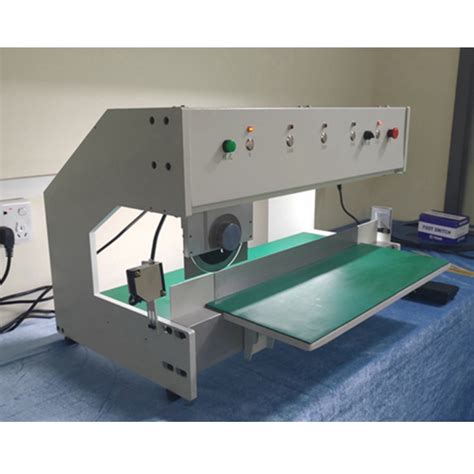
Overview of PCB Printing Techniques
When diving into PCB manufacturing, understanding the various printing techniques available is crucial for achieving optimal results in your prototyping projects. These techniques not only impact the quality of your printed circuit boards but also influence the pcb manufacturing cost and efficiency. One popular method is screen printing, which allows for the application of conductive inks across larger areas, making it particularly useful for creating pads and traces. Another method is inkjet printing, known for its flexibility and ability to print on diverse substrates, enhancing design complexity without incurring significant costs.
Additionally, laser etching has garnered attention in recent years due to its precision and ability to create intricate designs with minimal material waste. This technique is particularly favored by many pcb manufacturing companies aiming to deliver high-quality products while keeping production time low. By leveraging these advanced techniques, you can streamline your pcb manufacturing business processes effectively.
In summary, adopting the right printing techniques can greatly improve your PCB prototypes by ensuring that they meet design specifications and performance requirements, ultimately leading to a more successful end product without excessive expenditure. Whether you focus on screen or inkjet printing, understanding these tools will empower you to make informed decisions, enhancing both your prototyping capabilities and overall production quality.
Chemical Etching: Tools and Safety Considerations
When diving into pcb manufacturing, understanding the role of chemical etching is crucial for achieving high-quality prototypes. The process involves using specific tools to remove unwanted copper from a PCB substrate, effectively creating the desired circuit patterns. Essential equipment includes etching tanks, which come in various sizes to accommodate different production needs. When selecting an etching solution, many pcb manufacturing companies often opt for ferric chloride or ammonium persulfate, both of which provide effective etching capabilities while balancing cost and efficiency.
However, safety should always be a top priority in the etching process. Make sure you have the appropriate personal protective equipment (PPE), such as gloves, goggles, and lab coats, to prevent any chemical exposure. Proper ventilation is equally important, as fumes can pose health risks. Additionally, ensure that you’re trained to handle hazardous materials safely and follow industry-standard procedures for disposing of chemical waste.
In your pursuit to understand pcb manufacturing cost, consider how investing in high-quality tools will streamline your workflow and enhance production efficiency. By focusing on effective chemical etching techniques and safety protocols, you can not only benefit your pcb manufacturing business but also foster an environment that prioritizes quality and safety. Embracing these practices ensures your products meet industry standards while minimizing risks associated with PCB fabrication.
CNC Milling in PCB Prototyping
CNC milling plays a pivotal role in the pcb manufacturing process, offering precise and reliable results for prototyping. This method involves the use of computer numerical control machines, which enable you to mill away excess material from a blank PCB to create intricate designs and pathways with exceptional accuracy. One of the key advantages is its ability to produce complex geometries that are often difficult to achieve with traditional methods. By utilizing CNC milling, you can not only reduce the pcb manufacturing cost, but also significantly shorten turnaround times, allowing for rapid iterations and testing of your designs.
When engaging in this process, it’s crucial to choose the right materials and settings tailored for your specific applications. Quality is non-negotiable; you’ll want to ensure that your chosen pcb manufacturing companies have a strong reputation for maintaining high standards in their machinery and operations. The ability of CNC machines to handle various materials—from standard FR-4 substrates to more advanced options—allows for flexibility in what you’re able to prototype. Furthermore, integrating CNC milling into your pcb manufacturing business streamlines workflow and enhances productivity—key factors that can set you apart in a competitive industry landscape.
By understanding and implementing CNC milling effectively within the broader context of PCB fabrication, you not only improve accuracy but also ensure that your prototypes meet stringent specifications required for successful transitions from design to final products.
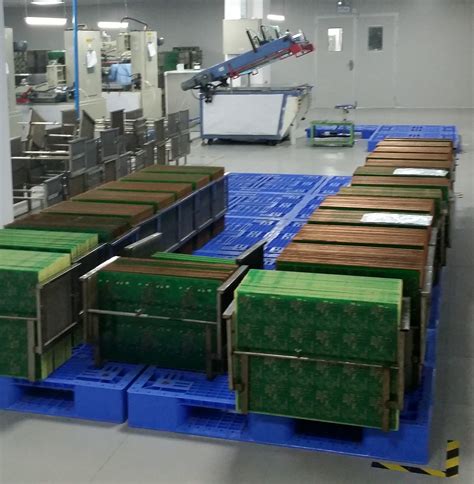
Testing and Quality Assurance Equipment for PCBs
In the realm of PCB manufacturing, ensuring the reliability and functionality of your printed circuit boards is paramount. That’s where testing and quality assurance equipment comes into play. As you embark on your PCB manufacturing business, you need instruments that can help you assess the integrity of your designs. Equipment such as automated optical inspection (AOI) systems and X-ray inspection tools can detect faults in PCBs before they reach the end-user, thus reducing the overall PCB manufacturing cost by mitigating potential returns or redesigns.
You might also consider using In-Circuit Test (ICT) setups, which are essential for checking connections and component placements on populated boards. This type of testing can provide immediate feedback on the quality of your prototypes, helping you refine your designs. Partnering with reputable PCB manufacturing companies can also provide access to advanced testing technologies that elevate your prototypes above industry standards.
Investing in comprehensive quality assurance equipment not only boosts confidence in your products but also fosters trust with your customers. By implementing these testing mechanisms, you ensure that each prototype meets high performance and reliability criteria, ultimately refining your approach to PCB manufacturing processes as you scale up production.

Optimizing the PCB Fabrication Workflow
Optimizing your PCB fabrication workflow is crucial in enhancing productivity and minimizing the PCB manufacturing cost associated with prototyping. One of the first steps you can take is to invest in quality PCB fabrication equipment that can streamline various processes. Utilizing advanced printing techniques and in-house CNC milling machinery, you can reduce lead times significantly, allowing for faster iterations in your designs. Furthermore, integrating effective testing apparatus into your workflow not only ensures that you achieve high-quality results but also helps in identifying potential issues early in the PCB manufacturing process. When selecting equipment, consider how these machines perform in conjunction with one another; a synergistic approach allows for more efficient handling of materials and better overall outcomes for your PCB manufacturing business. Collaborating with reputable PCB manufacturing companies can provide additional insights into best practices and cutting-edge technologies that can enhance your workflow further. By optimizing these processes, you’ll position yourself to not only meet the demands of a competitive market but also deliver superior products that align with customer expectations.
Future Trends in PCB Manufacturing Equipment
As technology continues to advance, the landscape of PCB manufacturing is evolving, bringing with it innovative equipment and techniques that shape the industry. One notable trend is the increased use of automated systems that streamline the pcb manufacturing process, driving efficiency and precision. These systems can significantly reduce the pcb manufacturing cost by minimizing human error and optimizing production workflows. Additionally, companies are increasingly adopting additive manufacturing methods, which allow for more complex designs and quicker prototyping, thus catering to the rapidly changing demands of consumers. This shift enhances collaboration between pcb manufacturing companies, as they leverage new technologies to stay competitive. Furthermore, advancements in machine learning and data analytics are enabling businesses to predict equipment failures and perform maintenance proactively, ensuring that production remains uninterrupted. As you explore these emerging trends in pcb fabrication equipment, consider how they can benefit your own pcb manufacturing business, focusing on integrating innovative solutions that not only enhance quality but also keep pace with market trends. The future promises a transformative journey for PCB prototyping as it embraces these cutting-edge developments.
Conclusion
In your journey through PCB fabrication, it is crucial to understand the significance of investing in the right PCB fabrication equipment. This equipment is essential not only for speed but also for accuracy in the PCB manufacturing process. By utilizing high-quality tools and technologies, you can greatly enhance the efficiency of your prototyping efforts. Moreover, recognizing how various PCB manufacturing companies operate can provide insights into best practices and innovative techniques that might help improve your own processes. Additionally, assessing the PCB manufacturing cost associated with different types of equipment will allow you to make informed decisions that align with your budget while maintaining high standards of quality. Lastly, as you explore the landscape of the PCB manufacturing business, stay aware of emerging trends in equipment and technology that could give you a competitive edge. Investing wisely in PCB fabrication equipment ensures not just immediate benefits but also long-term success in a rapidly evolving industry.
FAQs
What is PCB manufacturing?
PCB manufacturing refers to the process of creating printed circuit boards, which serve as the foundation for assembling electronic components. This process involves several stages, including design, fabrication, and assembly.
What are common PCB manufacturing companies?
There are several reputable PCB manufacturing companies, each specializing in various types of boards and production methods. Companies like JLCPCB, PCBWay, and Andwin provide a range of services from prototyping to bulk production.
How is the PCB manufacturing cost determined?
The PCB manufacturing cost is influenced by several factors including materials used, complexity of the design, number of layers, and production volume. A basic board might be relatively inexpensive, but advanced designs with intricate specifications will typically incur higher costs.
What should I consider when starting a PCB manufacturing business?
When starting a PCB manufacturing business, consider your target market, necessary equipment and technology, sourcing materials effectively to maintain quality while keeping costs low, and adhering to industry standards for production.
For more in-depth insights on pcb manufacturing, please visit this link.

